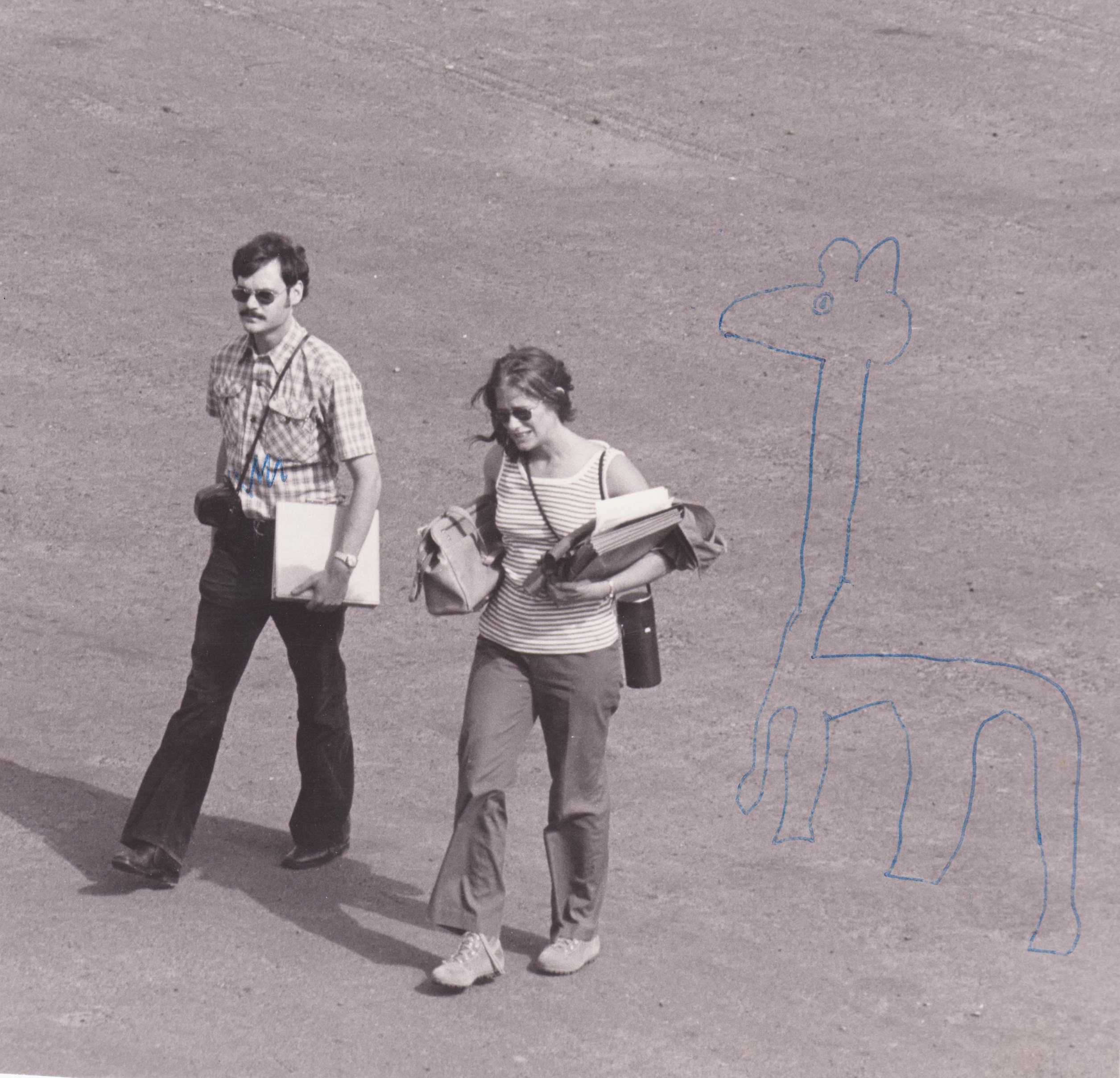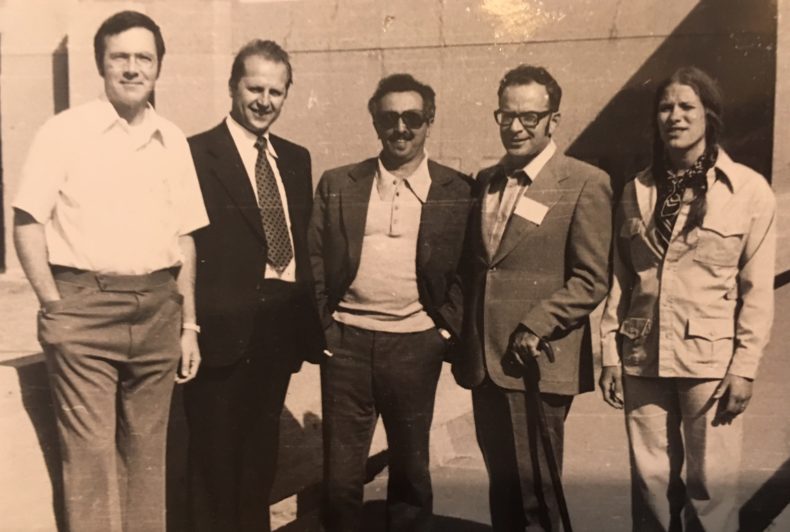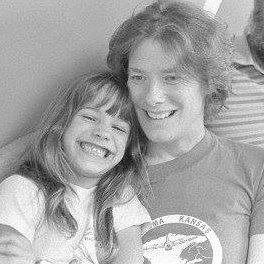
The night before I wrote this, I couldn’t sleep. There was a halfmoon beaming into my face through the windows, thrown open to diffuse the 90-degree heat that had collected like smoke in the eaves of my bedroom. There was my restlessness from poring through notes for a feature that I was trying and failing to write. But it wasn’t either of those things. I couldn’t sleep because I was counting.
Every few minutes, the windows burned bright, then flared out: Lightning. In May. In Portland, Oregon. That NEVER happens.
One-one-thousand, two-one-thousand, three-one-thousand, four-one-thousand, five … RRRRUMMMBLLE.
Flasher-flash-flicker-flash. One-one-thousand, two-one-thousand, three… BOOOOM.
My mom is the one who first taught me that the number of seconds between bolt and thunder tells you how distant lightning is: Five seconds for each mile. Collect counts for a number of strikes, and the series of data points will tell you whether the storm is approaching or sweeping away. It’s been a good rule to live by. For safety, working and playing above treeline in the mountains. And for wonder, to remember to pause, open up my eyes and ears and let the world roar in.
My mom – Peggy LeMone – is really good at that sort of thing. She and my dad used to drive us out on the plains east of my hometown in Colorado to watch storms roll through from the safety of our car, which was, she pointed out, a Faraday cage. This wasn’t just a hobby, though. It was her life’s work. She chose to study the weather at a time when there were almost no women in the field, for the simple reason that it fascinated her. She went on to be the first female senior scientist at the National Center for Atmospheric Research in Boulder, and just a few years ago, the third female president of the American Meteorological Society. And through all that, she’s accumulated some pretty good stories, which helped shape my expectations of what kind of life I might be able to have, both as a woman and as a kid who never quite fit in. So I called her up the day after my sleepless night and asked her to share some of them with you during LWON’s week of moms.
Sarah G.: What kind of kid were you growing up, in Columbia, Missouri?
Peggy LeMone: I loved to go outside, and I loved art, loved to draw. I loved science and I had an older brother Charlie who was into making radios and television sets and stuff, and I loved to hang around and watch. Then when I was in third grade, lightning struck our house. It was the loudest noise I had ever heard in my life. It blew a hole in the roof 5 feet across, and the wood of the beams into splinters two inches long, along the grain. It exploded the chimney, and bricks fell off and tore up some of the deck chairs. So I took some bricks and some pieces of chair and some splinters of wood to show and tell the next day. It was my first weather talk.
Until then, I had wanted to be a fireman. But after that, the weather seemed more exciting. There was a crazy summer of severe weather in 1956 or 1957 – hail, 80 mile an hour winds – and I started keeping weather records in notebooks. The high and the low temperature, the barometric pressure. I was always into clouds, so I would draw the clouds, and draw weather maps of the United States, with weather fronts on them.
I was considered kind of weird, probably. I had this shirt covered with weather vanes that I was so proud of. Even some of the teachers considered me kind of weird. But I had good friends, so it didn’t matter. My 9th grade civics teacher had us write about what we wanted to be when we grew up and present it to the class. One of my best friends, Caroline, said she wanted to be an astronomer. I said I wanted to go into meteorology. And then this popular girl got up and said she wanted to be a nurse.
And the teacher looked at me and said, ‘You should be a nurse, like Jan.’
I don’t think the teacher liked me much, because one of my older brothers, Bob, was a bit wild. He and the rest of the football team went nuts one day and raided a farmer’s watermelon field and ate all the watermelons. Afterwards, she announced it in class as an example of “bad citizenship.”
SG: Was it hard being a tomboy and a nerd in that place, at that time?
PL: My mom was always a little disappointed that I wasn’t invited to all the clubs that her friends’ daughters were invited to join. But I didn’t want to be in those clubs. I remember going to a sorority and being criticized for laughing too loud. I don’t remember any of my high school teachers encouraging me, even though I made good grades in science.
I left a year early, because my mother wanted to retire. She was a nurse anesthetist, but she had never had career ambitions. She had had to go back to school (to support four kids) after my father died. I had most of my required credits, so I think I got a diploma. (But) I’m a high school dropout.
In college it was different. I went to the University of Missouri and the Dean of Sociology (a friend of the family) took my weather notebooks over to the Atmospheric Science department, and I got a job there working with a professor, who’d take the time to show me things, and who told me about Joanne Simpson, the first woman in the United States to get a PhD in meteorology.
Then when I was applying for graduate schools, I applied for this fellowship to pay for it. I got to the point where I had to interview with a panel of three or four guys. And they said, ‘Why should we give you this, when we know you’re going to stay home and have babies?’
Well I ended up getting it.

SG: And you picked Seattle?
PL: The people on the faculty at Missouri said the University of Washington Atmospheric Science Department was like a family. And frankly, I thought the mountains would be cool. We had cliffs in our backyard growing up, and I used to love to climb cliffs. So I had fantasies about mountain climbing.
The first field research program I ever did was for a controlled burn when I was in graduate school. One of my professors asked me if I was willing to go to Oregon to release neutral buoyancy balloons above a fire, to see how fire draws in air and makes its own weather. I was supposed to head a crew of smokejumpers to do this. Two women and 18 guys participated. We women stayed in a tent, and the guys stayed in a motel. Nobody knew much about controlled burns, so we were surrounded by smokejumpers who were supposed to act if we screwed up.
When I asked to get together with my crew on the first day, the guy who was in charge of the smokejumpers said, ‘We don’t have anybody,’ but that they would figure it out. The next day, there were three or four African Americans there to work with me. Which was kind of weird, because there were none among the smokejumpers the day before. And one of the crew told me that the attitude of the head of smokejumpers was that the only person low enough to work for a woman, was a black person. Well, those of us on the balloon crew had a great time anyway.
Also there’s the prostitution story. I don’t know if you want me tell that one. Me and the other woman went to one of the motel rooms where the male crewmembers were staying to watch a man walk on the moon for first time, and to take a shower. And the hotel people thought we were prostitutes.
Anyway, we were releasing these balloons, into a simulated fire. And we had two cameras taking time-lapse photographs. And one of the guys threw a smoke bomb and it landed at my feet. And the smoke went up my pants and out my sleeves and the neck of my shirt. People thought this was so funny that they showed a film clip of it at a forestry conference. They said, “And this is Bubbles LeMone.”
SG: How did you end up in Colorado?
PL: Well, for my thesis I went to Norman, Oklahoma for the summer, and took data from a tower more than 1600 feet tall to try to figure out how the formation of ‘cloud streets’ is connected to the surface of the earth. Cloud streets are long lines of cumulus clouds that form in strong winds – forming in upward-moving air parcels that have helical circulation, and make kind of long, rolling lines that extend for hundreds of miles. And then there was an opportunity to use a research aircraft from the National Center for Atmospheric Research in Boulder, so I applied for a program and was accepted. We went out in the field and I helped design flight patterns to study the (cloud street) rolls over the Great Lakes. I was able to show that cloud streets were associated with updrafts from the ground.
Then I came back to NCAR as a post-doc (and never left).
SG: Is that when you flew through the hurricanes?
PL: No, the hurricanes happened later on, in the 1980s. My boss was interested in studying them. We wanted to know two things. How rain bands interacted with the flow of the hurricane, and what the turbulence was like near the ground. You’d get a call, and 24 hours later, you’d have to be where the research airplane was gonna be. In 1983, I flew down to Guadalajara, Mexico. I packed for one hurricane, and there ended up being a second hurricane. I had to buy some extra clothes in a street market. One of the T-shirts said ‘Eat shit’ on it in Spanish.
SG: Did you know that it said that when you bought it?
PL: Nope. Anyway. Being on those research flights could be very boring, because you can’t see much out the window until you get to the eye. And then it’s quite thrilling. You put on this seatbelt, like what a child wears in a car seat. It goes over your shoulders, over your waist, between your legs. Then there’s an updraft, and you feel like you’re being pressed down, and then you go straight into a downdraft, and it’s like the bottom falls out of everything. And then you come out in this incredible eye. It’s like being inside of cereal bowl, with the cloud rolls on the sides going up and circling. It’s just beautiful.
The first time I flew through the eye wall, I was so frightened that my chest started hurting. And I put my arms across it in that classic way. The guy next to me asked if I was OK, and I told him I thought I was going to have a heart attack. And he said, “Oh, that’s good, I thought you were gonna throw up.”
(SG: Here it’s worth noting that my mom actually did have coronary artery disease at the time. The rest of us would prefer that she had just gotten airsick instead.)
SG: Was it hard to balance being a mom and a scientist?
PL: When your father and I decided we’d have kids, I went to my supervisor, who had a daughter. I told him we were thinking of having two children, and I’d want to go part time for a while. He gave me advice on how to handle it, like keep going to meetings, so people notice you. I think it was much easier to do that then, because we weren’t relying on grant funding that would run out on a set schedule. I could go half time for a while, and gradually work my way back. And all the credit for me being able to do all that sexy traveling for research later on – to Guadalcanal, to Taiwan – that goes to your father. He had to do everything while I was gone. I went to Australia when you were little, and you and your brother got the chicken pox at the same time.
SG: You always used to have us do these everyday science experiments.
PL: Do you remember when we took a balloon on the airplane, and measured how it expanded as we went up and the pressure went down? And contracted as we got close to the ground? And sometimes, when we’d drive over mountain passes, we’d read the temperature on the thermometer to see how it dropped with altitude. Do you remember when we went through the dust devil?
SG: No!
PL: I was driving and the van just jolted, and your father said, ‘What are you doing?!’ And I said, ‘We just drove through a dust devil!’
SG: Would you do anything differently if you could?
PL: I’d choose to be a mom and a scientist over again. It’s a much richer life. I don’t think I ever got a good idea sitting at my desk in an office. They happen when I get distracted and totally get away from it. Having a life that’s three-dimensional—hiking in the mountains, having a family, chasing tornados. All of those things enrich your life as a scientist, because that’s how you make connections.
SG: Mom, what did you hope for, for me, as a woman and a person in the world?
PL: That you could do what you wanted to do.

Your mother and I are close to the same generation. She’s probably a bit younger than I am, but not much. I was a music/art/languages person, not a math/science person, but a good friend of mine in high school was very into math. For senior year, she signed up for both trig and calculus. She was called down to the guidance counselor’s office and told, “Girls don’t take those classes.” She stuck to her guns and took them. But that’s what life was like for bright girls in the mid-1950s.
Your mom is awesome. Great interview!
<3
Sarah- What a great tribute to your mom. I remember when we were visiting Jim’s mom, Helen in the 70’s. Peggy showed us photos of the eye of the hurricane. I thought she was very brave-and a little nuts! We had fun at reunions. How she loved her kids and we love her Christmas cards with the drawings of the interesting vacations. I will share this article with my granddaughter who loves science and show her how she can really be what she chooses. Thank you.
Thank you for writing this article/interview, one of my colleagues shared it with me. My research is close to your Mom’s research and I have met her several times at meetings. She is one of my role models and I admire what she has done for women in the field of meteorology. I also have a teenage daughter and juggling motherhood with research projects, that take me away from home for longer periods, is not easy, but I would not want to miss being a mom. Thank you again and all the best to you and your Mom.